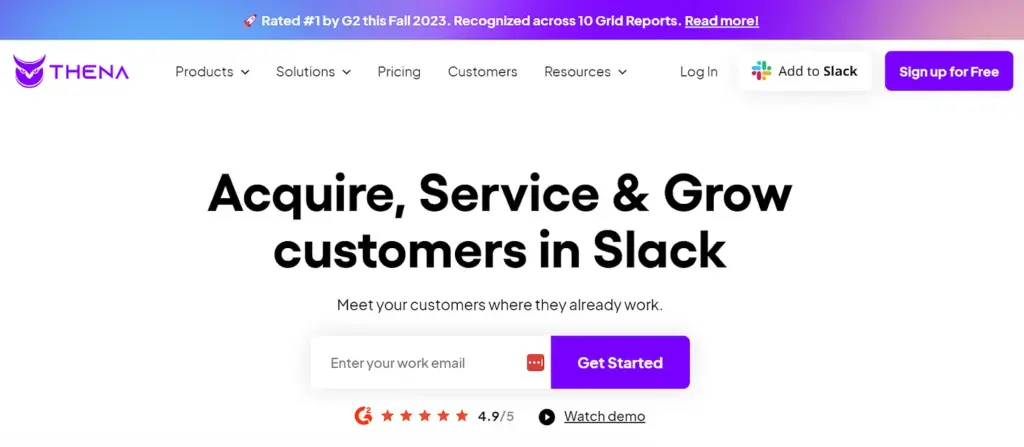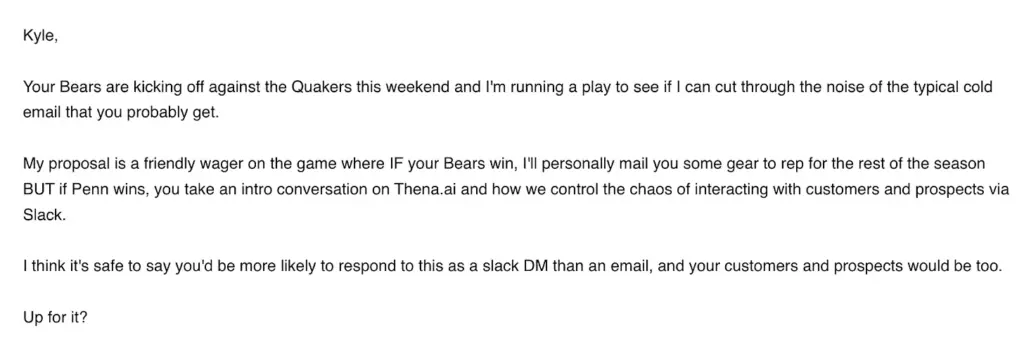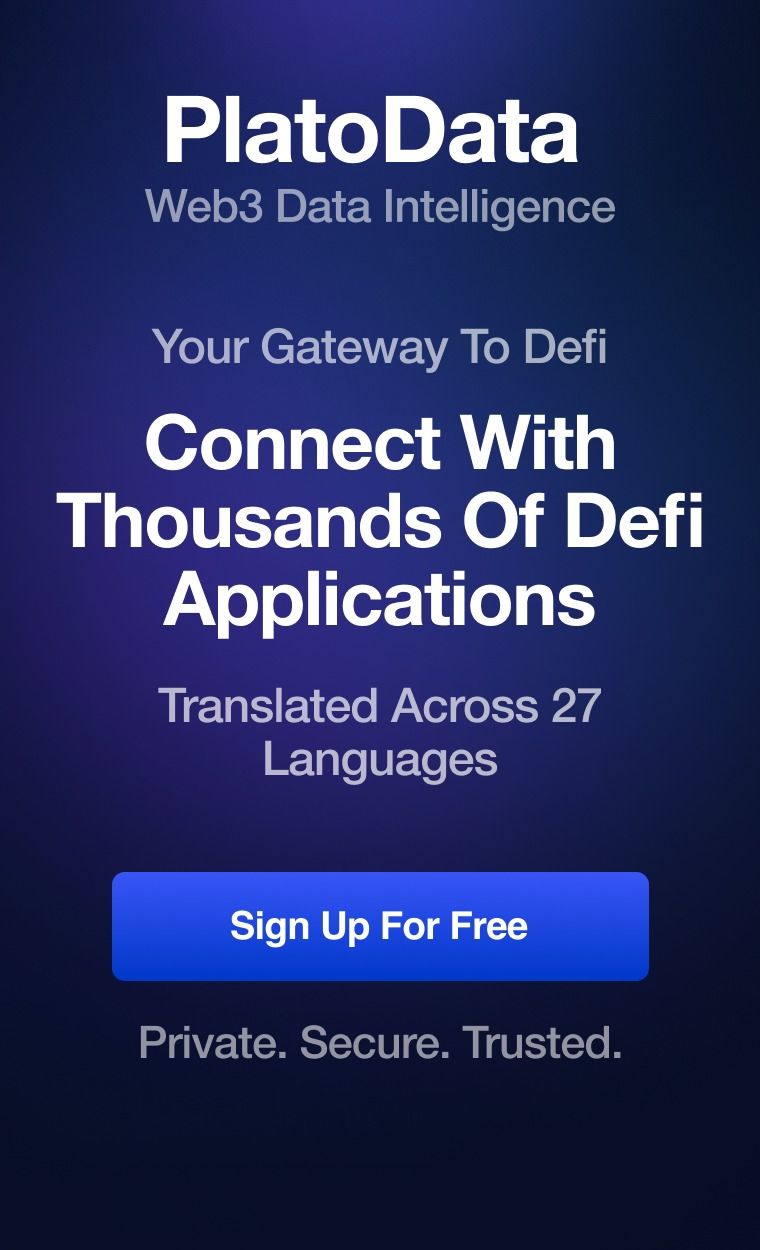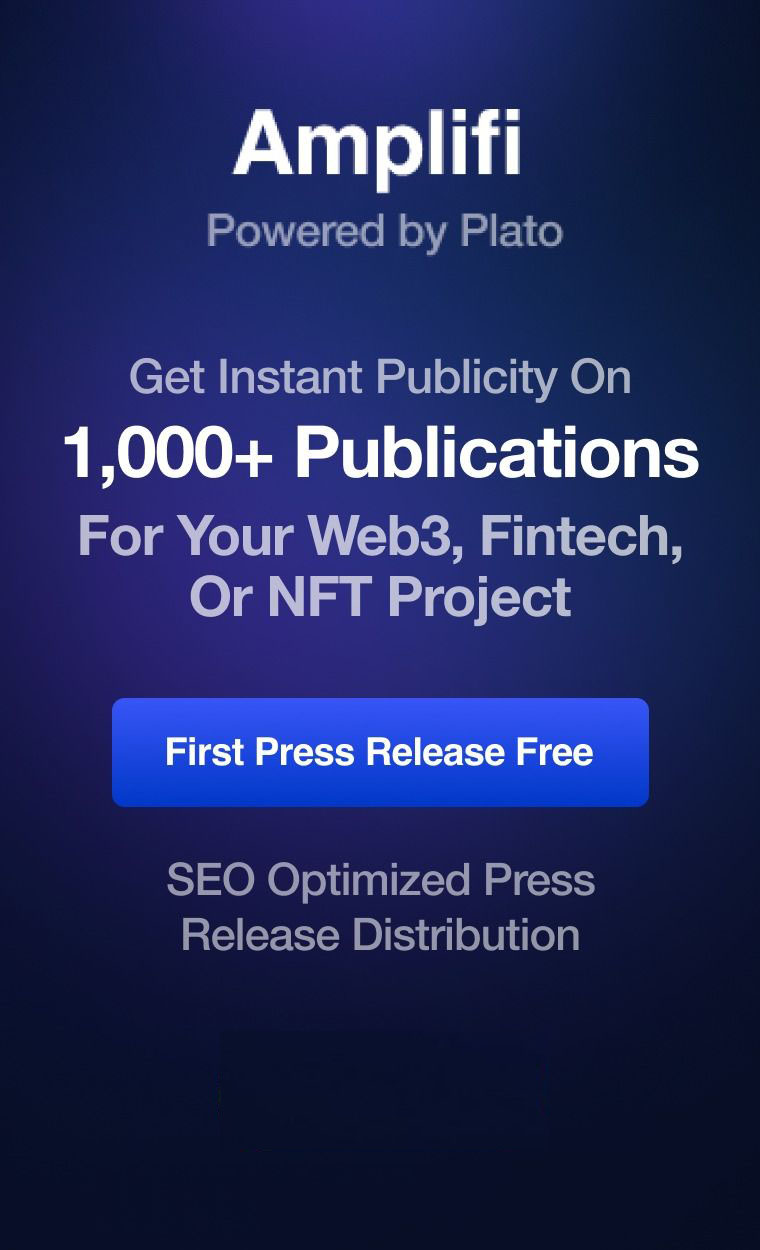Editor’s Note: This article first appeared in Kyle Poyar’s newsletter, Growth Unhinged, which explores the unexpected behind today’s fastest-growing startups. You can subscribe to get the latest from Kyle here.
In today’s post, I’m tackling the somewhat controversial topic of outbound automation, aka scaling outbound acquisition without hiring BDRs or SDRs.
My two cents: it sounds like a fad, but automated outbound is worth exploring. That’s especially true for SMB-focused or product-led businesses where traditional outbound would be prohibitively expensive. (I previously wrote about outbound and PLG last July.)
—
We’re all looking for ways to automate manual processes in order to accelerate growth. After all, that’s part of the thesis for why product-led growth can be such an amazing part of the go-to-market mix.
One area that I’ve been thinking about lately is outbound prospecting and, specifically, outbound emailing. Look, outbound hasn’t yet “died” despite the chatter or the SDR shaming. But manual outbound is certainly expensive and hard to make productive, particularly for a Seed or Series A-funded company with an unknown brand. According to Jeremey Donovan of Insight Partners, it used to take 200-400 touches per opportunity generated by cold outbound. Now that number has ballooned to 1,000-1,400 touches (!).
A fully manual outbound approach simply won’t cut it anymore.
That’s why I was so fascinated by the story of Thena, AI-powered customer success and support for companies using Slack, which has managed to achieve the productivity of five to 10 sales reps without hiring BDRs or SDRs. I interviewed founders Govind Kavaturi and Mike Molinet (a Branch co-founder) along with strategy and ops lead Brendan Kazanjian about how they automated outbound – and how you can do it, too.


Launching an AI product in only 6 months
Thena’s founders launched publicly on Product Hunt in October 2022 (they were the #3 product of the day), only six months after starting the company. The team had a bias toward releasing ASAP rather than waiting three or more years and building in isolation (the route taken by some PLG startups like Attio, which I profiled earlier this year).
The founders built Thena based on their personal experiences from Branch. Back then, they couldn’t keep track of the ~5,000 external users who communicated with Branch through 400+ Slack customer channels. Nor could they analyze the resulting Slack data or have visibility into the conversations that were happening.
“We didn’t want to spend three years building Thena in isolation only to finally bring it to market and hope people ‘got it’ — that kind of approach really only makes sense for deep-tech companies. Besides, we’d felt this pain ourselves. We’d grown up trying to grow and manage customers in Slack when Govind, Ankit and I were at Branch. We intimately knew the problems and the challenges. We also understood the opportunities. So let’s build it. Let’s launch it. And then let’s see how the market responds to it.”
– Mike Molinet
Their initial wedge for Thena was the ability to take a conversation and send it to another platform, enabling bidirectional chat. This would allow customers to organize their customer channels, connect to internal tools, and enable better customer support workflows. They believed this would be valuable to any size organization – from seed-funded to publicly traded companies – as long as they supported customers in Slack. And they made it easy to get started; users could simply Add to Slack.


Attracting the first 100 customers through founder-led outbound
Thena acquired its first 10 customers the way many SaaS apps do – from the founders’ own networks. While the founders learned a lot from those early customers, personal networks always start to dry up and it becomes paramount to go after customers you don’t know.
Their big bet was on the outbound motion to potential buyers in their ideal customer profile (ICP), and these efforts brought in 70% of Thena’s next 100 customers. Their hypothesis was that they were building a new product category that people didn’t know existed and so had to find their target customers and educate them on a different approach.


An example of one of the first outbound email replies that Thena received (they become Thena’s first customer)
The first step was to get extremely clear about their ICP. It wouldn’t make sense to just prospect into any company using Slack. Because of what Thena’s product does, these companies’ customers also need to be using Slack or else they’re not a fit (although that might change in the future). They honed in on:
- (a) tech companies that
- (b) sell technical products to
- (c) dev, product, or engineering teams at other tech companies.
The more specific you can be about your perfect customer, the better your response rates will be from outbound efforts.
Thena’s initial outbound efforts were still founder-led. Govind and Mike would do everything they could to find the right people and connect with them in different ways, like on LinkedIn or over email. By around April or May of this year, roughly six months after the Product Hunt launch, they started to get a sense that their efforts were working. It was time to scale the approach – and that’s when they hired Brendan.
Automating outbound to attract the next 1,000 customers
Brendan joined with a mandate to find the best way to replicate the work of five to 10 outbound reps with just one person behind a screen – essentially automating the three hardest parts of the outbound jobs Mike and Govind had been doing manually:
- Building account lists at scale. Identifying all the other people, all the other companies Thena hadn’t signed on as customers yet, that matched its ideal customer.
- Growing those accounts lists continuously so it doesn’t ever dry up — if Thena runs out of accounts, they’re not using data to their advantage.
- Prioritizing the targets on the account lists. Narrowing down all targets and deciding which ones to focus on now vs. later (like when they eventually have more ramped AEs).
Brendan first looked at what third party products were available. He found a couple of viable products that Thena could use to automate the things they wanted automated. Then he tested them over and over with the effective messaging that Mike and Govind had been using in their 1:1 outreach.
“We got very lucky because the GTM automation tool space right now is basically an arms race among all the platforms — who can do the most with what they have, who can reach the most startups, who can offer the best product, etc. They’re doing whatever they can to bolster their product and make them as useful as possible, so we’re using that to our advantage. We’re getting in early with these companies and getting free trials.”
– Brendan Kazanjian
In Brendan’s experience, BDRs usually spend 70-80% of their job on repetitive manual tasks that they have to do before they can actually begin outbounding people. The biggest bottleneck tends to be finding the right companies and the right people at those companies, and that’s the biggest part of outbound that Thena has automated so far.
To do so Thena uses a product called Clay as the central hub for data pulls and other prospecting tasks. “It’s not the messaging or end product of our outbounding,” Brendan told me. “Instead, it’s everything in-between — the central hub for data pulls, the central hub for all that tedious prospecting busy work, the central hub where all our integrations interact with each other.”
Unpacking Thena’s outbound automation process step-by-step
Where Thena used to manually find prospects using LinkedIn Sales Navigator, now they use Clay to pull every customer support leader that could possibly want Thena. In only a minute, Brendan can see 5,000+ of those people show up on his screen.
Brendan could theoretically email all 5,000+ of those people immediately, but that would put a big strain on the system. Mailboxes have limits and domains have scores, just like you have a credit score, Brendan emphasized. Those are things that he didn’t want to mess with since it would impact their ability to run the outbound motion long-term. Brendan’s next step was to quickly ramp up the number of domains they have and the number of mailboxes they send from.
“We started with a little batch, doubled it the next week and kept ramping up week-after-week until we’d reached a steady point and warmed up the domains. That’s when we felt comfortable putting everything on autopilot. And then it was just a matter of how many emails we could send out each week, with some mailboxes sending more than others based on their scores.”
– Brendan Kazanjian
Another area where Thena has invested is around better data enrichment to target specific companies and segments within Thena’s ICP. To do that, they’re using a data tool called Keyplay (I previously featured Keyplay’s unique approach to SaaS + media + community).
“A great example is when we want to expand our target account list and prioritize which accounts should be fully automated or personalized. Keyplay finds the best accounts, then scores each one according to whether it should be marketed to manually by an AE or automatically via Clay based upon filters and parameters we’ve set ahead of time. This has been transformational in ensuring we’re first targeting the right companies in the right way.”
Once Thena had the infrastructure to be able to send a high volume of outbound messages, they wanted to find how to do it in a way that generates the best response. One area they’ve focused on is personalization, which usually only happens on a 1:1 basis when a BDR/SDR does their own account research. It’s worth noting that these aren’t AI-written “personalized” emails, they’re personalized-looking emails that adapt a template with a couple of custom fields.
“One example is that we created a master grid of the college football season and are using automation to populate and send weekly emails detailing which college the recipient attended, their college mascot’s name and which teams are facing off that week.”


An example of a “personalized” email using automation
Right now, Thena has 30+ mailboxes and 10+ domains that are active. And they take a different approach for high-priority accounts versus the others. For high-level profiles at high-priority accounts (think C-levels, VPs), the emails will usually be more personalized and often sent by the founders. The founders have a stronger personal brand with Thena’s target audience, leading to better email performance. In other cases, emails may be sent by an AE. (Nobody receives an email “from” Brendan – he’s simply the person building the workflows.)
BDR/SDR teams historically quantify their productivity in terms of meetings booked. That hasn’t gone away with Thena’s model, but they’re paying more attention to outcomes like product signups and how much revenue those signups drive. If nobody advances through our sales funnel, they’re doing something wrong on the outbound front.
(I found the product sign-up metric particularly interesting in the context of PLG companies thinking about outbound. In a PLG business, there’s a lower barrier for a prospect to take action on an outbound message. If they’re intrigued by the message, they can simply start using the product without having to sit through a qualification call or product demo.)
As Thena looks ahead to the next three months, their goal with outbound automation is to make the system run fully on autopilot for their lower-priority accounts. Then, with the lower-priority motion on autopilot, the team can spend more of their time on focused, personalized messaging for higher-priority enterprises. (They can’t automate things like cold calling or multi-threading within an enterprise… at least, not yet.)
One thing they’ve learned is that an automated outbound approach frees them up from some of the old constraints of manual outbound. While an SDR/BDR would immediately push for a meeting – since that’s how they’re measured and compensated – Thena can test calls to action more along the lines of a probing “XYZ is a problem in customer support – what are you doing to solve it?” question rather than a straight-up “Book a demo right now” command.
Mike concluded the conversation by underscoring that the world is changing under our feet right now with AI and the methods of 2018 no longer apply. People need to be thinking about how to build a modern GTM team based on modern tools and modern buying behavior.
Maybe outbound prospecting and PLG aren’t so different after all?
- SEO Powered Content & PR Distribution. Get Amplified Today.
- PlatoData.Network Vertical Generative Ai. Empower Yourself. Access Here.
- PlatoAiStream. Web3 Intelligence. Knowledge Amplified. Access Here.
- PlatoESG. Carbon, CleanTech, Energy, Environment, Solar, Waste Management. Access Here.
- PlatoHealth. Biotech and Clinical Trials Intelligence. Access Here.
- Source: https://openviewpartners.com/blog/outbound-automation-guide/



